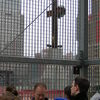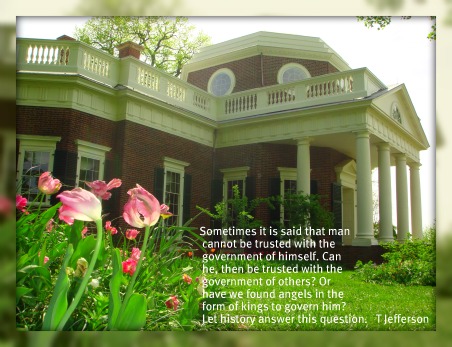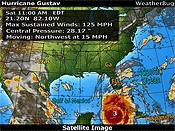Resolution to Protect the Honor of the United States Flag
 Sunday, March 20, 2011 at 10:06PM
Sunday, March 20, 2011 at 10:06PM --this was discussed with then Candidate Martha Roby now Alabama's US House of Representative
Whereas: In 1776 General George Washington headed a Congressional Committee authorized to design and produce one official Flag, which could be clearly distinguished at sea and not mistaken on land; a Flag representing the unity, strength, and noble purpose of the United States of America, a new Flag for a new Country, and
Whereas: The Congressional Committee of George Washington, Robert Morris and John Ross commissioned Philadelphia resident, Mrs. Betsy Ross to sew a Flag of red and white stripes, with white stars on a field of blue. The Flag’s colors and shapes were carefully chosen: Blue, a strong color; White, a pure color; and Red, a brave color. The thirteen stripes of red and white were to represent the original thirteen colonies, joined together in unity as one. A star is a symbol of light and truth. On the field of deep blue bunting was a white star for each state, showing each state being equal, and
Whereas: This Red, White and Blue Flag has henceforth been the standard and emblem of the United States of America. It has been proudly displayed at every Fort, boldly carried onto every battlefield, gloriously waved aboard every American ship and sharply saluted by every American soldier throughout our history. Throughout the world, the “Stars and Stripes” are raised at sunrise to the trumpeting of “Revelry”, and reverently lowered at sunset to the haunting sounds of “Taps,” and
Whereas: During the Battle of Fort McHenry in the War of 1812, Francis Scott Key penned the profound words about our flag in what became our National Anthem, “The Star Spangled Banner”. It ignited the flame of patriotism and continues to inspire all Americans as we see that “our Star Spangled Banner yet waves, over the land of the free and the home of the brave.” Americans salute our flag and sing our national anthem at every ball game and community gathering where Americans meet in every city, town and village, and
Whereas: In World War II at Iwo Jima in 1945, the United States Marines fought their way through to the top of Mount Suribachi to raise our American Flag in hard-fought victory. Photographer Joe Rosenthal captured the inspiring picture of the triumphant flag-raising, which circulated the globe, giving hope to free and enslaved people everywhere, and
Whereas: It is the American Flag which drapes the coffins of all our fallen soldiers and is presented to the surviving families. That flag symbolizes that our soldiers have not died in vain but for a noble cause, and
Whereas: Henry Ward Beecher, a prominent 19th Century clergyman and social reformer, stated: “A thoughtful mind, when it sees a nation’s flag, sees not the flag only, but the nation itself; and whatever may be its symbols, its insignia, he reads chiefly in the flag the government, the principles, the truths, the history which belongs to the nation that sets it forth,” and
Whereas: “Old Glory” has been reverently acknowledged by patriots of every age. Americans cannot be separated from the emblem that stands for us. Our flag is a part of us, and we of it. An attack on the American Flag is an attack on the American people, “and the republic for which it stands.” An assault on the Flag is an assault on the hopes, dreams, and aspirations of the people over which the Flag waves, and
Whereas: Flag Day on June 14th is a national holiday which is celebrated by Americans throughout the country, when we reflect on the meaning and significance of our “Grand Old Flag, the emblem of, the land we love.” Every day of the year our flag flies over the U.S. Capitol, the White House, the Supreme Court Building, national cemeteries, county courthouses, and homes throughout our nation. In the churches, schools, and classrooms, all Americans, young and old, respectfully rise to their feet to pledge allegiance to the flag we love, and
Whereas: The United States Flag precedes every United States delegation on foreign soil, and is flown over every U.S. Embassy throughout the world, and
Whereas: In July 1969, images of Apollo 11 astronauts planting the American flag on the Moon signaled a profound achievement for the United States and the entire world, and
Whereas: In 1861 Henry Beecher Stowe stated, “Our Flag carries American ideas, American history, and American feelings. Beginning with the Colonies, and coming down to our time, in its sacred heraldry, in its glorious insignia, it has gathered and stored chiefly this supreme idea: Divine right of liberty in man. Every color means liberty; every thread means liberty; every form of star and beam or stripe of light means liberty: not lawlessness, not license; but organized institutional liberty, - liberty through law, and laws for liberty. It is not a painted rag. It is a whole national history. It is the Constitution. It is the government. It is the free people that stand in the government of the Constitution,” and
Therefore: The history of our country is one of loving and honoring our American flag. It is worthy of respect and protection. Laws must be enacted by our United States Congress to criminalize desecration of the United States Flag on American soil, making it a federal crime to “knowingly cast contempt upon any flag of the United States by publicly mutilating, defacing, defiling, burning, or trampling upon it.” Congress must not allow this law to be subject to Judicial Review, which is within the power of Congress, Article III, Section 2, Paragraph 2 of the United States Constitution.










Reader Comments